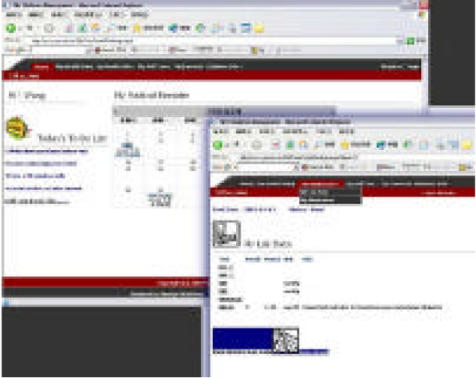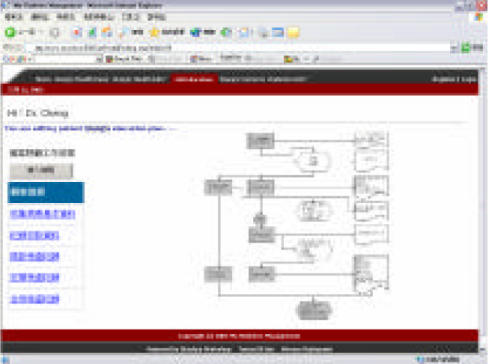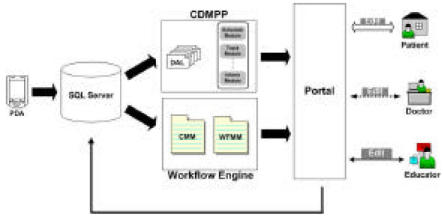Background
Diabetes care is one of the most important medical care works in nowadays. However, the dispersal of current diabetes medical practice leads to an uncoordinated work flow. Lacking of personal health information makes patients hard to implement self-care and medical providers have to deal with lots of paperwork.
Information technology [1] has mobile characters [2] to assist medical providers collecting and managing patient data conveniently. Using customized and accessible web technology to promote patient abilities of self-care as well as to help care providers plan patient-oriented care. Automatic workflow [3] applied to care guidelines could reduce workload and improve work efficiency of care provider. Make the most out of information technology to build an integrated “Diabetes Care System”. Thus we can provide complete disease management service which should be the most useful solution to meet the challenges of conventional care.
Method
The primary goal of this system is to establish integrated web diabetes case management environment provided for patients, doctors and educators. We use ASP .Net to develop Chronic Disease Management Portal Platform (CDMPP) under Microsoft .Net environment. This platform provides abundant and flexible modules for building a disease care portal. Administrators would be able to build a reliable portal easily under this platform. The user role subsystem authorizes each user with specific task to manage and use the portal.
Component-based Workflow Management System (CWFMS) empowers educators with editing functionality. There are two components in CWFMS: a pluggable workflow management utility based on .Net web user control integrates CWFMS with CDMPP seamlessly. The Workflow management service is facilitated by Web Service and make educator use these web case management tools without difficulty. Moreover, a PDA data collection utility developed by using NS Basic breaks the barrier of internet.
The system uses MS SQL Server as its backend and the architecture is shown as below: (Fig 1)
Fig. 1.
System architecture
And system screen shots are below: (Fig. 2)(Fig. 3)
Fig. 2.

Patient personal diabetes care portal
Fig. 3.

Education editing workflow in diabetes portal
Results
We deployed our system at Bei-Tou area in Taipei. There are 305 diabetes cases and 16 diabetes educators. We have completed a user satisfaction and the educator pointed out that the burden of health care has lowered (12.75%), and the efficiency has increased (14, 87.5%). At the same time, Patients consider the quality of health care has been improved (213, 69.8).
References
- 1.Linda Tetzlaff. Consumer Informatics in Chronic Illness. JAMIA. 1997;4:285–300. doi: 10.1136/jamia.1997.0040285. [DOI] [PMC free article] [PubMed] [Google Scholar]
- 2.Cornelia M. Ruland, Handheld Technology to Improve Patient Care. JAMIA. 2002;9:192–201. doi: 10.1197/jamia.M0891. [DOI] [PMC free article] [PubMed] [Google Scholar]
- 3.Saverio M. Maviglia, et al. Automating Complex Guidelines for Chronic Disease: Lessons Learned. JAMIA. 2003;10:154–165. doi: 10.1197/jamia.M1181. [DOI] [PMC free article] [PubMed] [Google Scholar]



